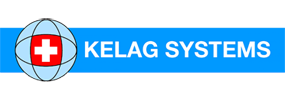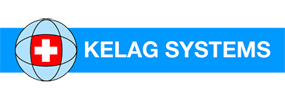Quality assurance
When it comes to quality, we won’t compromise.
We’re a renowned certified Swiss welding company which can look back on many decades of experience.
Since our early days, we have never compromised on quality in any aspect of pipeline, plant and hydraulic steel construction. At the same time, we encourage our highly qualified staff to always be open towards new processes and technological progress.
We attach great importance to regular training events to enable our staff to acquire top expertise and to guarantee the best possible quality of products, as well as reliability and strict adherence to deadlines.
Our goal is to increase the efficiency of our work without ever making any concessions to quality. This also applies to conformity with any legal requirements, as well as the relevant standards and regulations.
We’re convinced that this philosophy constitutes the best basis for our future development.
Measures ensuring continuing quality assurance
Visual testing (VT)
Visual testing refers to the basic optical assessment of a component with regard to any defects, which we carry out as a regular quality assurance measure in the context of the production process towards the end, or after the completion of, manufacturing. Our staff has acquired the corresponding NDT qualifications up to Level III in accordance with EN 473/ISO 9712.
Liquid penetrant testing (PT)
Using liquid penetrant testing (dye penetrant inspection) surface defects in ferrous and non-ferrous metals, such as cracks and incomplete fusion, particularly regarding weld seams, can be identified within a fairly short time. Our staff has acquired NDT qualifications up to Level III in accordance with EN 473/ISO 9712.
Magnetic particle testing (MT)
We use magnetic particle testing for detecting surface flaws in ferromagnetic materials (primarily carbon steel), as a high-sensitivity method for establishing the presence of surface cracks. Our testing staff has acquired NDT qualifications up to Level III in accordance with EN 473/ISO 9712.
Ultrasonic testing (UT)
Ultrasonic testing enables the localisation of discontinuities in the interior of a component or, e.g., a weld seam. Discontinuities on surfaces, or voluminous discontinuities such as cracks, incomplete fusion or pores, can be detected up to a high degree of probability. Our testing staff has acquired NDT qualifications up to Level III in accordance with EN 473/ISO 9712.
Radiographic testing (RT)
Radiographic testing is particularly suitable for identifying cavity-type defects (e.g. in weld seams), and thus represents one of our most essential non-destructive test methods. Our qualified testing staff has acquired NDT qualifications up to Level III in accordance with EN 473/ISO 9712.
Spectral analysis
Spectral analysis (positive material identification) is used to obtain qualitative and quantitative information on the chemical composition of a material. In this way, we can prove definitively that we are using the correct material.
Leak testing and pressure testing
We conduct these tests to examine non-pressurised and pressurised devices, vessels and pipelines for non-leakage. They are carried out in accordance with the applicable technical regulations, e.g. with the aid of calibrated pressure recorders or differential pressure measurement.
Layer thickness measurement
This type of measurement refers to the thickness of a coating, e.g. paint or varnish, that has been applied on a substrate. With layer thickness measurement, we can determine, examine and document the thickness of coating layers and metallic coatings on substrates.
Hardness tests
Hardness tests enable the assessment and documentation of material properties such as strength, toughness and resistance to wear, which provides a basis for deciding what type of material or specific material treatment is most suitable for your project.
Video endoscopy
With our video endoscopes, the formation of weld roots and temper colours in smaller pipeline systems or vessels in areas that are hard to access can be assessed and documented accordingly.
Residual oxygen measurement
Our staff use calibrated instruments to measure residual oxygen, to ensure and document that before the start of welding work – e.g. on pipelines in plant and apparatus construction in the food, nuclear or pharmaceutical industries – the residual oxygen content at the weld seam root is below the defined concentration in order to prevent temper colours from the start.
Marking transfer
We transfer markings in accordance with the applicable STVI regulations (Rule 201), for the purpose of material identification in semi-finished products or components (incl. expert supervisors).

 German
German
